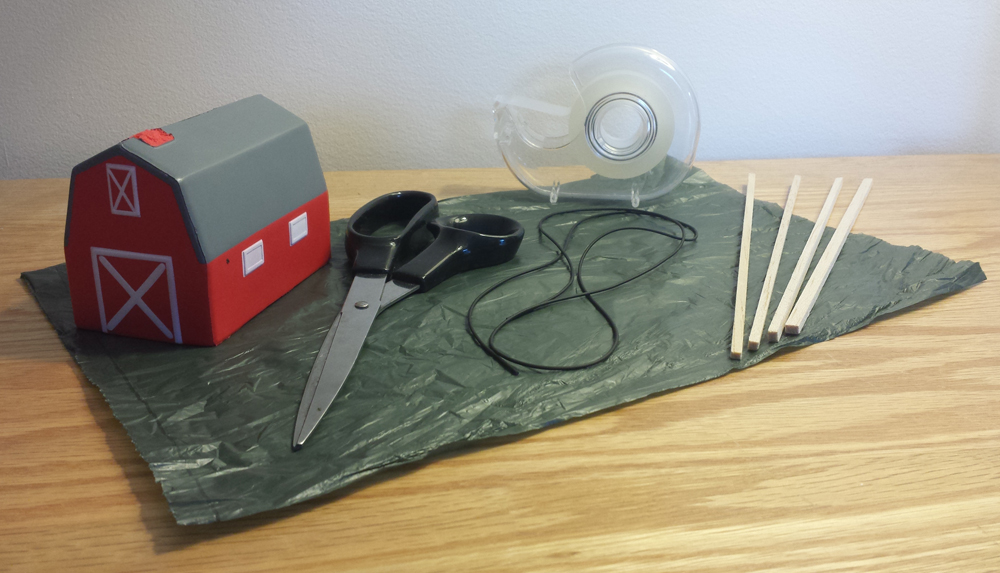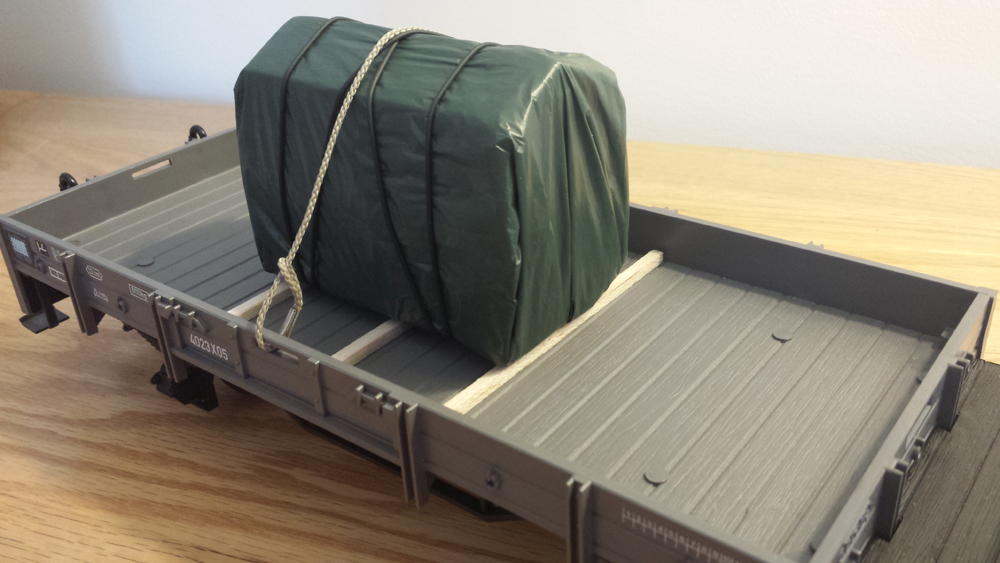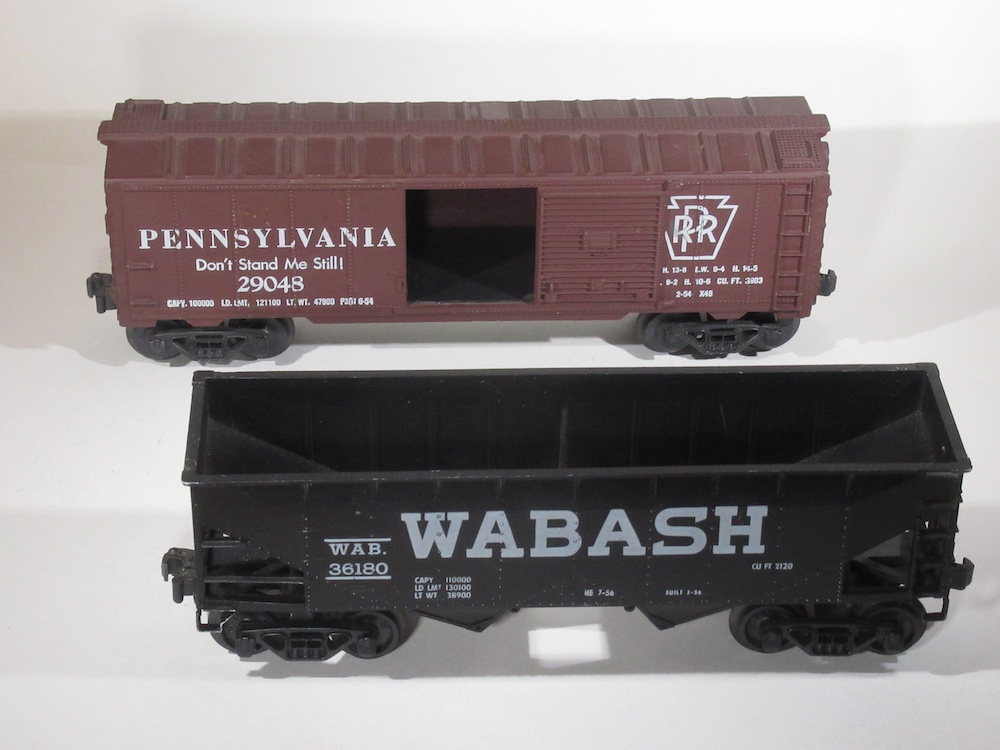Part of the nature of our great hobby is to collect. Often we collect items not necessarily train related, like old toys, knickknacks, or scraps from a recent project. An easy way to incorporate them into your railroad is to turn them into loads for freight cars or loading docks.

Here’s a sampling of castoffs I used to make a freight-car load. It includes a foam barn from an insurance company, scrap balsa wood, lanyard material from a bag of glow sticks, and a dog waste bag.
To start, I removed the cupola off of the barn to give a symmetrical look to the load. I placed the barn roof up and began to fold the bag around the barn to simulate a tarp. I folded in the sides first, then made an accordion fold to hide the excess plastic at the ends. After adjusting the bag as necessary I taped it down with gift-wrap tape. You could use glue, but make sure it won’t eat through the plastic material. It’s important that the bag is opaque. Darker colored bags and thick white plastic ones found in clothing stores work better to cover your freight-car load. If the bag you have on hand is transparent, a coat of primer on the mock load would help conceal it.
After covering the load, I tied the lanyard material around the load to simulate tie downs. My material was 1.2mm thick, which works out to be around 1⅛” scaled, perfect for tie down material size. I first made two end ties and secured them with a knot on the bottom. I then took a longer piece of lanyard material and crossed it around the top, also securing it with a knot. For extra strength, I glued the knots.
The last thing to do was to cut the scrap balsa to make dunnage (pieces of wood for the load to sit on) for the flatcar. In addition to the tie downs “securing” the tarp to the load, additional tie downs can be simulated for the ones used to tie down the load to the flatcar itself.

These loads can be as easy or complicated as you want, depending on how much time you want to invest into it. The load I’m sharing here took about 10 minutes to make.













